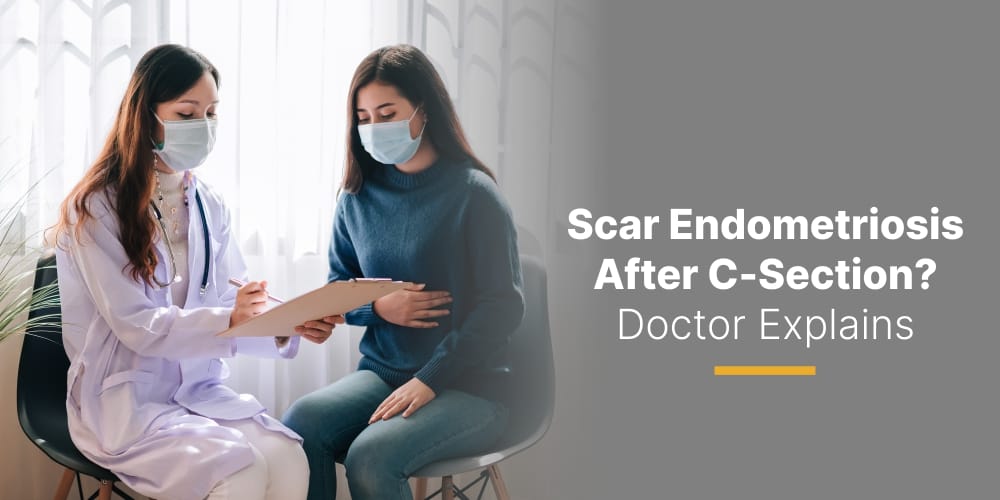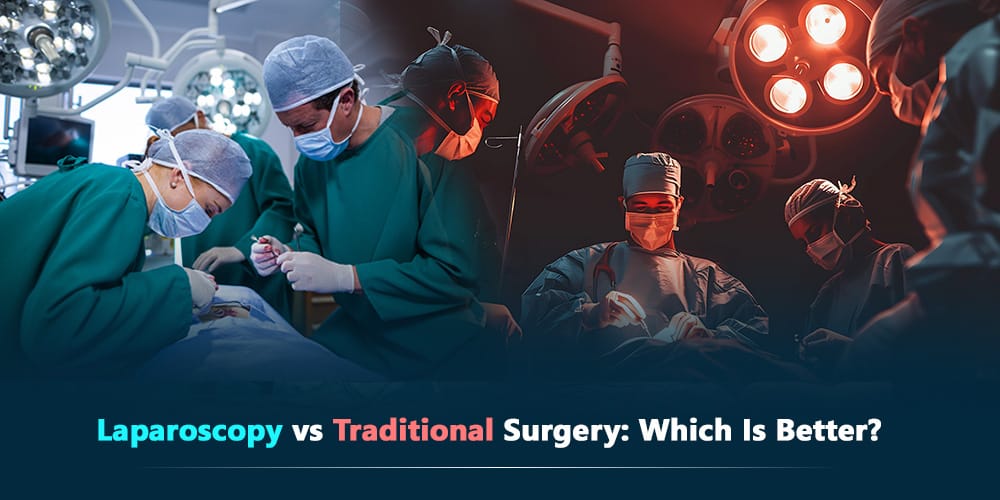Undergone a C-section? Are you seeing a painful lump near the scar? This might be due to a rare condition called scar endometriosis. This might seem Hebrew, but in this situation, the endometrial tissue grows around the surgical scar. If it remains untreated, it can cause considerable pain, discomfort, and other complications. Although I started this blog by mentioning C-section, it can also happen after hysterectomy or abdominal surgeries.
Explaining the scar endometriosis causes
Are you wondering, “How did that happen”? Scar endometriosis usually happens due to an accident. During a C-section, doctors surgically open the womb and might pick the endometrium with surgical instruments. In some cases, it can be carried away by fluids or discharges. Once they form, they would mimic their original purpose, control the menstrual cycle, and thicken, thus causing pain and discomfort.
These are some scar endometriosis causes one should know of:
- C-sections (Caesarean Sections): This is by far the most frequent culprit. If you’ve had a C-section, especially if you’re experiencing symptoms, this is something to consider.
- Hysterectomies: Even after uterus removal in laparoscopic hysterectomy, if any endometrial cells were left behind in the surgical area, they can cause this.
- Episiotomies: This is the small cut made during vaginal delivery, and rarely, scar endometriosis can occur there too.
- Even endometriosis laparoscopy scars (the small keyhole cuts from previous endometriosis surgery) can, in very rare cases, be affected. It’s less common with these tiny cuts, but not impossible.
Spotting the Scar Endometriosis Signs
After surgery, you will have pain in the afflicted area; it’s a given. It can be intense, too, but with time, you will be relieved.
However, the pain of scar endometriosis is distinct because this surgical pain gets worse during your menstrual cycle. Not just once, throughout the year.
This is your primary sign that you are experiencing scar endometriosis. Apart from pain, you will also experience:
- A Lump or Swelling: You might feel a distinct lump or swelling right on or under your scar. This lump often feels bigger and more tender when you’re menstruating.
- Pain to Touch: The scar area might be very sensitive or painful if you press on it.
- Color Changes: Sometimes, the skin over the lump might look a bit reddish or even bluish, especially during your period, due to the trapped blood.
What are some scar endometriosis diagnosis options?
Are you experiencing these symptoms? Or are you unsure of how to proceed? Then visit your local gynecologist in Japiur. Your doctor will ask about your medical and surgical history and examine the scar. After that, he might order these diagnostic tests:
- Ultrasound: This is often the first step; it’s quick and painless and can show if there’s a mass or lesion under your scar.
- MRI Scan: If the ultrasound isn’t clear, or if we need more detail, an MRI can give us a much clearer picture of the lump and how deep it is.
- Biopsy (The Confirmer): The only sure-shot way to confirm scar endometriosis is by taking a small sample of the tissue (usually during removal of the lump) and sending it to the lab. If the lab finds endometrial glands and tissue, the diagnosis is confirmed.
Understanding Scar Endometriosis Treatment
This is a debilitating condition; however, it offers multiple effective scar endometriosis treatment options.
Hormonal medicines, like those used for other types of endometriosis, might help a little with the pain, but they don’t get rid of the lump.
The best and most definitive scar endometriosis treatment is surgery:
- Complete Excision: We surgically remove the entire lump, making sure to get all of it out, along with a bit of healthy tissue. This is crucial to prevent it from coming back. This type of endometriosis surgery scars the area, but it’s the most effective way to address the pain.
- Mesh Repair (Sometimes): If removing the lump creates a larger gap or weakness in your abdominal muscles, we might need to use a special mesh to strengthen that area and prevent a hernia.
I’ve often seen that women tend to overlook persistent pains or strange lumps, especially if they are related to a past surgery or something they might mistakenly assume is “normal” after childbirth. If you’ve had a C-section or any other abdominal surgery, and you’re experiencing a painful lump on your scar that seems to act up around your periods, please don’t just dismiss it; it could be scar endometriosis. Early diagnosis and timely, proper scar endometriosis treatment can make a difference to your quality of life, and prevent the lesion from growing larger and becoming more complicated to manage.
Dr Pankhuri has been known to provide the best advice and treatment options for endometriosis, scar endometriosis, infertility, and uterine polyps. She is affiliated with numerous prestigious organizations in her field and has received accolades for her services.
Is scar endometriosis dangerous, or can it turn into cancer?
While the pain and discomfort can be significant, scar endometriosis itself is almost always benign, meaning it is not cancerous. It’s essentially misplaced normal tissue. There’s a very, very rare chance of malignant transformation, but it’s not considered a typical cancer risk like some other growths. The main concern is usually the pain and potential for growth, not cancer.
How quickly should I see a doctor if I suspect I have scar endometriosis?
You should see a doctor fairly promptly, especially if you notice a new or growing lump on your scar, or if your scar pain is consistently cyclical and worsening. While it’s not usually an emergency, early diagnosis helps manage symptoms, confirms what it is, and allows for timely treatment before the lesion potentially grows larger or causes more discomfort.
Does scar endometriosis affect my overall health or future pregnancies?
Scar endometriosis is typically a localized issue, meaning it only affects the area of the scar. It generally doesn’t impact your overall health systemically like widespread endometriosis might. For future pregnancies, if the scar involved is from a C-section, the scar tissue containing the endometriosis is usually removed. This specific condition doesn’t typically affect your ability to conceive or carry a future pregnancy, as it’s outside the uterus.
What’s the recovery like after surgery for scar endometriosis?
Since the surgery involves removing a localized lump from your abdominal wall, recovery is generally quicker than major abdominal surgery. You might experience some soreness and bruising at the surgical site for a few days to a week. Most women can resume light activities relatively quickly, often within a week or two, but strenuous exercise or heavy lifting will likely be restricted for a few weeks to allow the wound to heal completely.
Is there anything I can do to prevent scar endometriosis from happening during a surgery?
Unfortunately, there’s no guaranteed way to prevent it entirely, as it’s believed to occur due to the accidental transfer of microscopic cells during the procedure. However, surgeons are often mindful of this possibility and employ techniques during surgery aimed at minimizing the spread of uterine cells, such as careful suction of fluids from the operative field and thorough washing of the surgical site before closing the incision.





